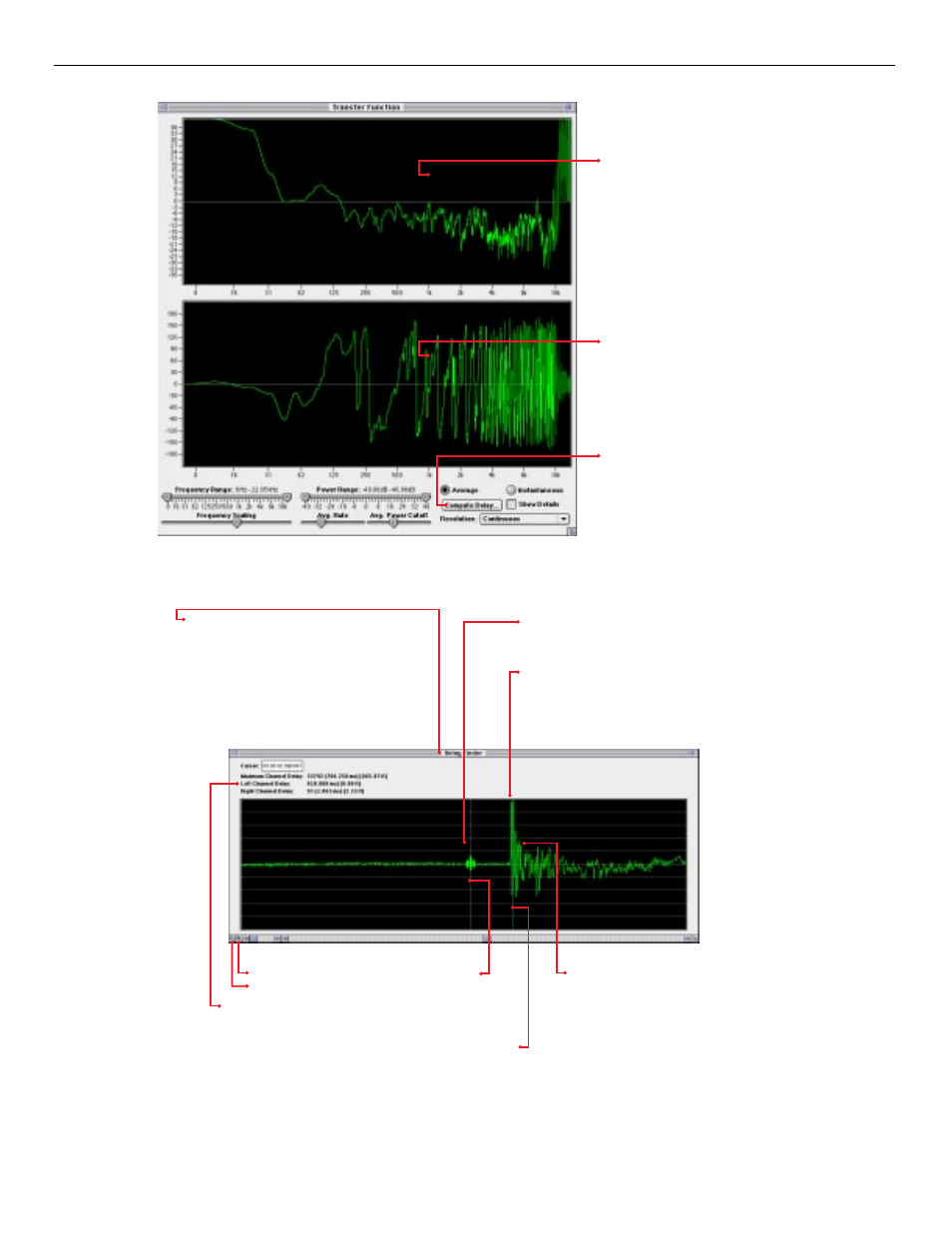Time aligning the measurement, Spectrafootdm operation guide 35 – Metric Halo SpectraFoo Version 1.5 User Manual
Page 36

Transfer Function of a Room Response with a time delay
Time Aligning the measurement with the Delay Finder Windows
The delay finder uses the Fourier deconvolution
theorem to compute the impulse response of the signal
processing elements that the response signal has
passed through. The deconvolution theorem allows
SpectraFoo to, in essence, “divide” the stimulation
signal out of the response signal and create the impulse
response of the signal processing system being
measured. The impulse response is the signal that we
would measure if we stimulated the system with an
impulse (e.g. a loud, sharp snap).
The impulse response is essentially noise for all times
before the impulse has propagated through the system
being tested.
This means that the time between Time ”0” and the first
spike in the impulse response is the delay between the
source and the response signals. If you move the cursor
of the delay finder to the first spike you will delay the
source signal by the appropriate amount to time align
the source and response signals.
All of the other spikes present in the impulse
response are the time delays of the various
“reflections” in the system. These can be real
reflections from walls, tables, etc. or they could
be virtual reflections from the digital delays in a
reverb algorithm or electrical reflections due to
improperly terminated studio wiring.
Cursor
The delay readouts provide precise information
about the relative delay between the left and
right channels for the current cursor position.
This information is provided in samples,
milliseconds, and in feet (assuming standard
temperature, humidity and pressure). The
maximum inter-channel delay supported by
SpectraFoo is about 750 milliseconds.
Time ”0”
Click here to Zoom in.
Click here to Zoom out.
Relative Power as a function of frequency.
The data in the relative power display is
invalid because the source and response
signal are not time aligned and therefore not
really correlated with each other.
Relative phase as a function of frequency.
A jagged, sawtooth wave-like trace in the
phase response display indicates that the
source and response signals are not time
aligned
To time align the source and response
signals, click the “Compute Delay…” button.
The delay finder window will appear with a
message that reads "Recording data". The
delay finder will record for 2.5 seconds and
then a graphic display will appear as shown
below.
SpectraFooTDM Operation Guide
35
